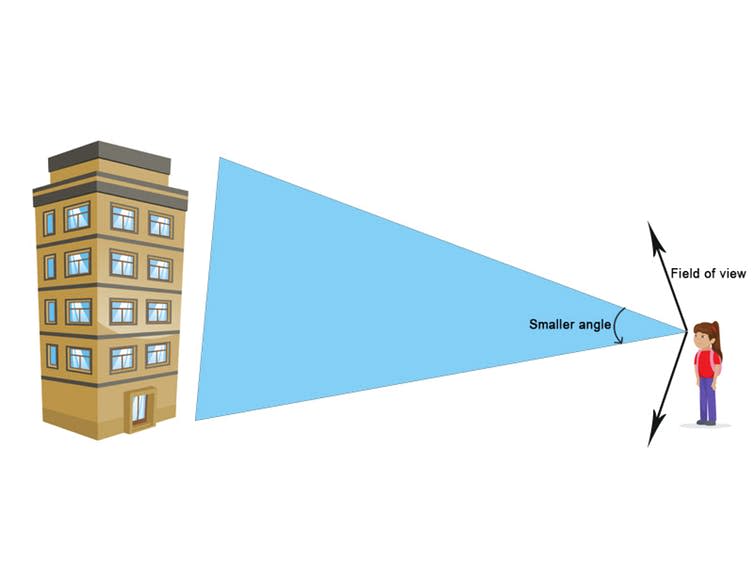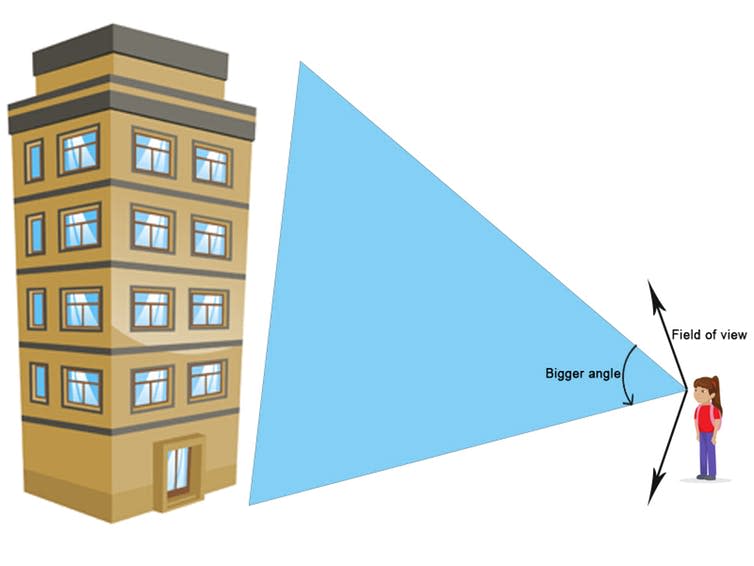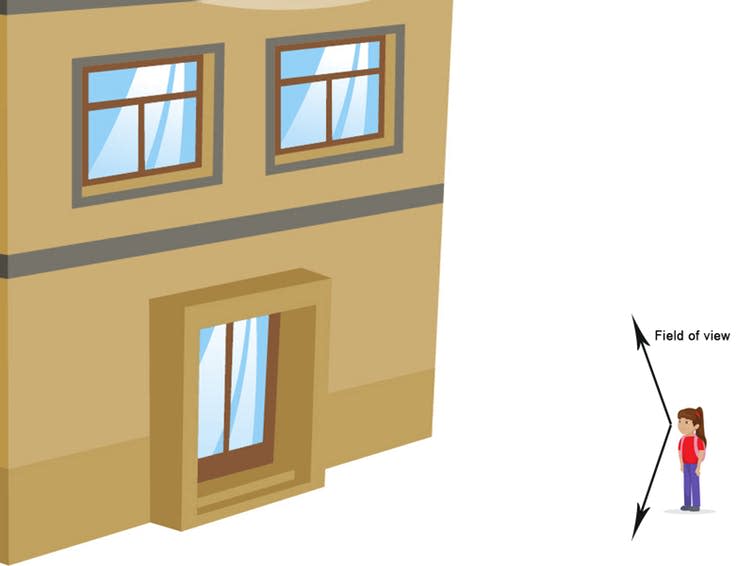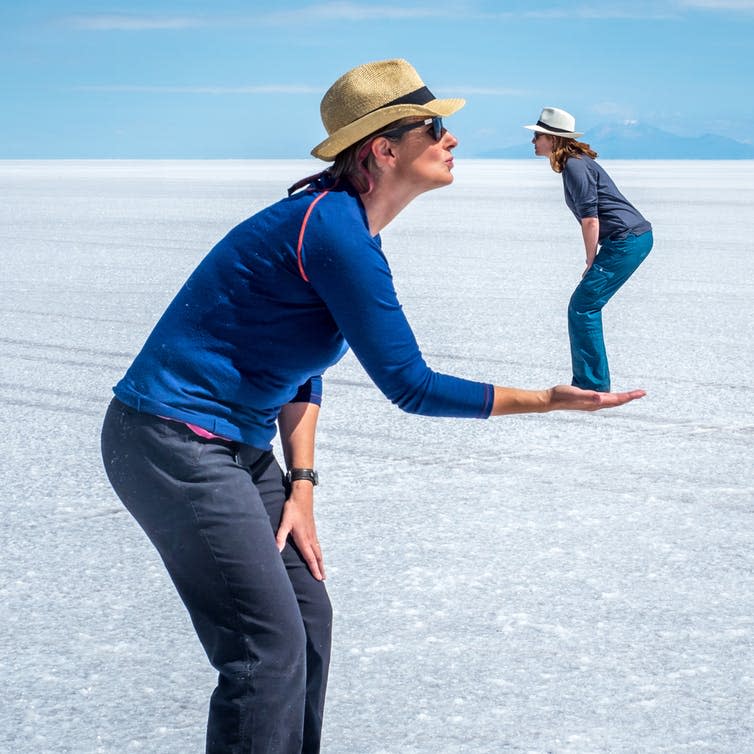Curious Kids: why do things look smaller when further away and bigger when closer to me?

This is an article from Curious Kids, a series for children of all ages. The Conversation is asking young people to send in questions they’d like an expert to answer. All questions are welcome: find out how to enter at the bottom.
Why do things look smaller when further away and bigger when closer to me? – Elena, age ten, Haywards Heath, UK
The easiest way to understand this is by thinking about something called your field of view. This is how much you can see, without turning your head. When things are closer to you, they take up more of your field of view, so they seem bigger. When they’re further away, they take up less of your field of view, and so seem smaller.
One way to measure our field of view is to use an angle. An angle is a measure of how much something turns, and it’s measured in degrees. Zero degrees means there is no turn at all, while 360 degrees means a full turn.
So if you spin yourself all the way around, you have turned 360 degrees. If you spin yourself half way around, so that you’re facing the opposite direction, you’ve turned 180 degrees.
Vertically (that means up and down) our field of view is about 150 degrees. How big things appear to us has to do with how much of our field of view they take up.
If you look at a building from a long way away, you can easily see the whole building from top to bottom. So the angle between the line from your eye to the top of the building, and the line from your eye to the bottom of the building, is quite small.

The further away the object is, the smaller this angle will be. So, the subject appears small, because it takes up less of your field of view.
But as you get closer to the building, it will take up more and more of your field of view, as the angle between the line from your eye to the top of the building, and the line from your eye to the bottom of the building, grows larger.

When you get right up close to the building, you may not even be able to see the top without tipping your head backwards. The angle between the line from you to the bottom of the building, and the line from you to the top is bigger than 150 degrees. The building will take up your whole field of view – and then some!

Scientists know that things are always better with experiments, so here’s one for you to try. You’ll need a smart phone with a camera, a big empty space (like a football field) and two friends or grown ups to help you.
One person stands far away, at the other end of the field. Another person stands much closer to the photographer, and holds out their hand. Now, the photographer might have to move around a little bit and give everyone directions, but as soon as everything is in line – click!
You should have a picture that looks something like this.

Of course, one person isn’t really that much smaller than the other – you’re actually just playing a trick, using everything you’ve just learned.
The camera is very much like your eye, so you know that the person who is closer to the camera will take up more of its “field of view”, appearing bigger, while the person who is further away will take up less of its “field of view”, appearing smaller.
Hello, curious kids! Have you got a question you’d like an expert to answer? Ask an adult to send your question to us. You can:
* Email your question to curiouskids@theconversation.com
* Tell us on Twitter by tagging @ConversationUK with the hashtag #curiouskids, or
* Message us on Facebook.

Please tell us your name, age and which town or city you live in. You can send an audio recording of your question too, if you want. Send as many questions as you like! We won’t be able to answer every question, but we will do our best.
More Curious Kids articles, written by academic experts:
How do you know that we aren’t in virtual reality right now? – Erin, 13, Strathfield, Australia
If the universe is like a giant brain, then where’s its body? – Aine, age 12, Edinburgh, UK
This article is republished from The Conversation under a Creative Commons license. Read the original article.

David Franklin does not work for, consult, own shares in or receive funding from any company or organisation that would benefit from this article, and has disclosed no relevant affiliations beyond their academic appointment.

 Yahoo News
Yahoo News 
